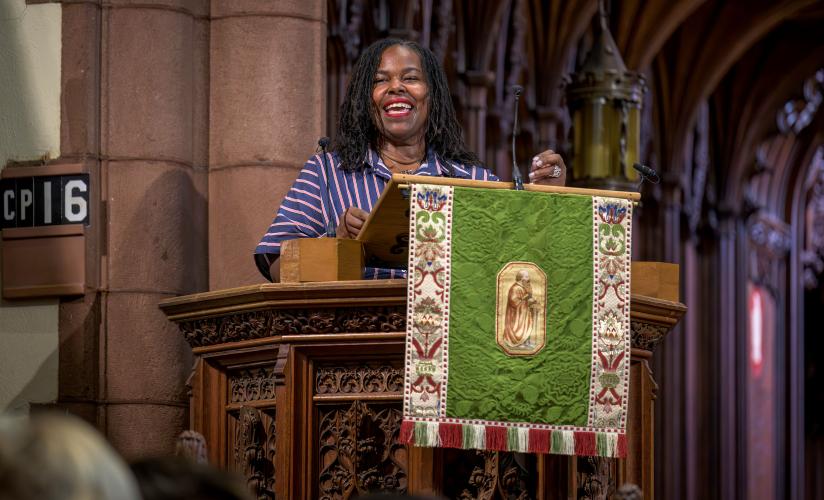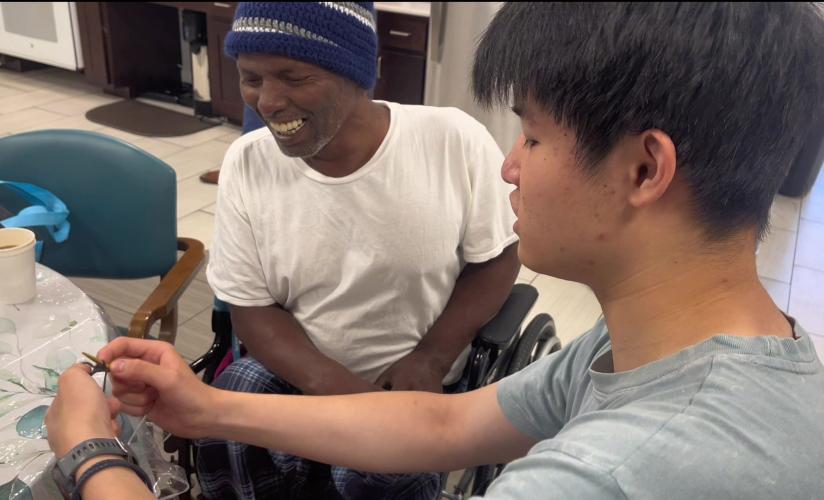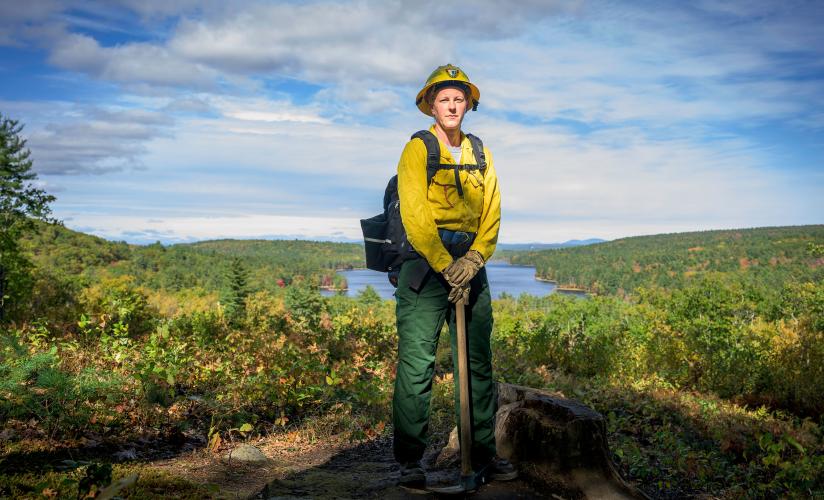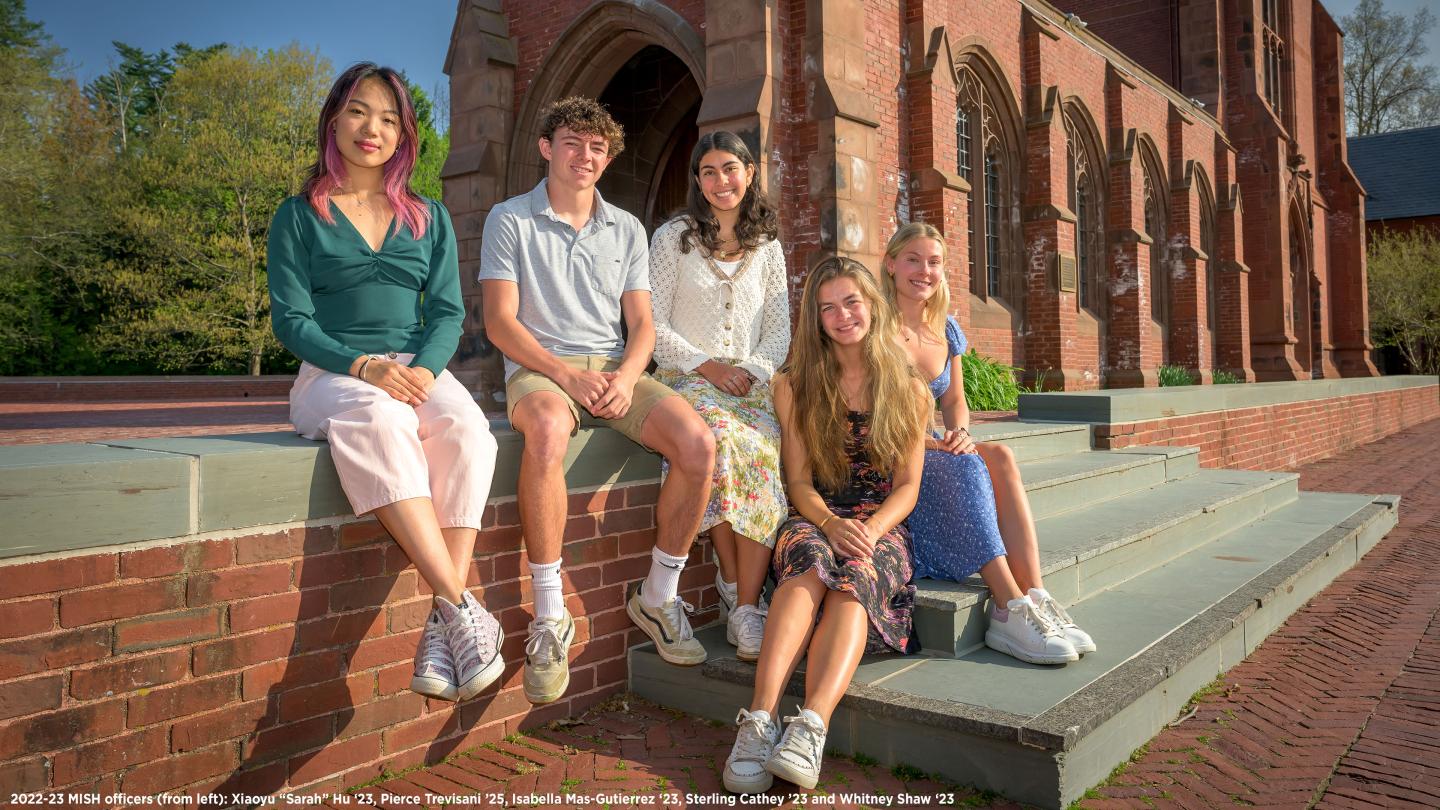

MISH and student philanthropy at St. Paul’s School.
BY JACQUELINE PRIMO LEMMON
Isabella Mas-Gutierrez ’23 was in middle school when she crossed the border from her hometown in Texas to an area of Mexico where many residents were experiencing homelessness and hunger. Earlier in the day, she had helped other volunteers with the nonprofit Banco de Alimentos load the car with groceries at a local food pantry; after a drive across dusty Texas countryside and passage through the port of entry, she helped unload and distribute the food to churches where those in need had sought refuge.
“We’d provide all the ingredients and volunteers would prepare a meal — sometimes the only meal those people would have that day,” Mas-Gutierrez says. “Sometimes we’d go grocery shopping with donated money to buy the food ourselves.”
She says that volunteering with Banco de Alimentos was one of the most meaningful experiences of her life — so she kept at it, taking multiple trips over the border with the group to distribute food, Christmas toys or care packages with essentials like toilet paper, cleaning supplies and nonperishable food items.
Now, as a Sixth Former at St. Paul’s School, Mas-Gutierrez is one of five student officers, alongside Whitney Shaw ’23, Sterling Cathey ’23, Xiaoyu “Sarah” Hu ’23 and Pierce Trevisani ’25, leading the School’s longest-standing student group. Known today as MISH, the group was established as the Missionary Society in 1860 — just four years after Dr. George Cheyne Shattuck Jr. founded the School — to provide students with an outlet for charitable and philanthropic work.
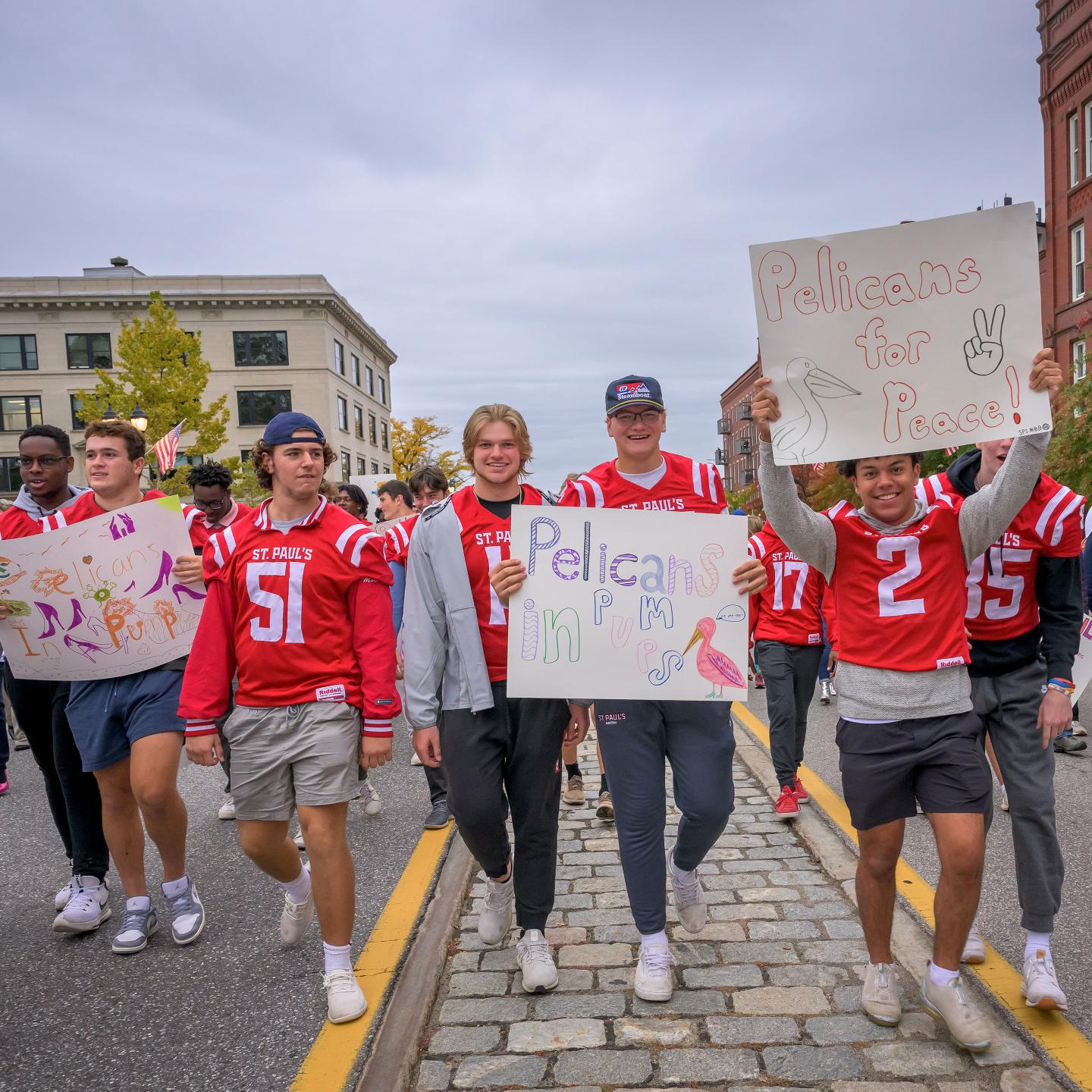
It is the philosophy of the Missionary Society to selflessly serve others, which is realized through the promotion of community outreach opportunities in the Concord vicinity, as well as those available nationally and internationally.”
Since its inception, it has been more accurate to classify MISH as a team of student leaders at the fore of the School’s commitment to service and community engagement than as a separate student organization or club. MISH officers function as a vital link to the service projects and community outreach endeavors available to SPS students on School grounds, in the greater Concord area and even across the world; they spread the word about these service opportunities through Chapel announcements, the daily SPS Connected newsletter and weekly house meetings.
Each year, students apply for the MISH officer positions; those who are chosen commonly have an extensive background in community service. “There is typically an in-person interview process with all the current MISH officers and the faculty coordinator,” says MISH faculty adviser and SPS Director of Global Engagement Victoria Bernier. “A variety of things are considered when choosing new MISH officers, but it’s primarily based on their demonstrated interest and experience in service. The officers provide the support, foundation and peer network to help other students who have ideas for their own service projects.”
A Springboard to Future Service
Today, every student who matriculates to SPS must fulfill community engagement credits as part of their graduation requirements and can do so through afternoon programs on the grounds, offsite independent projects, or a combination of both. Independent service projects completed over the summers and School breaks, Bernier notes, can provide students with an opportunity for focused, intentional service. “Technically, everyone is a part of MISH based on the ethos of the School,” she says.
Among its peer schools, SPS is in a small minority that still has a graduation requirement in community service or engagement. “This differentiating factor underscores the value we place on what we recite in the School Prayer, which asks us to be ‘unselfish in friendship, thoughtful of those less happy than ourselves and eager to bear the burdens of others,’” Bernier says. “So whether it’s through volunteering in the Friends Youth Mentoring Program, weekly visits to a local middle school or the Families in Transition Food Bank, the form Outreach Days, or the extensive work done by our students during Spring Break community service trips and summer independent projects, SPS grads leave with multiple experiences related to the ways they can use their time to be unselfish in friendship and eager to bear the burdens of others. For many, these engagement opportunities lead to continued mentoring and volunteering in college and beyond.”
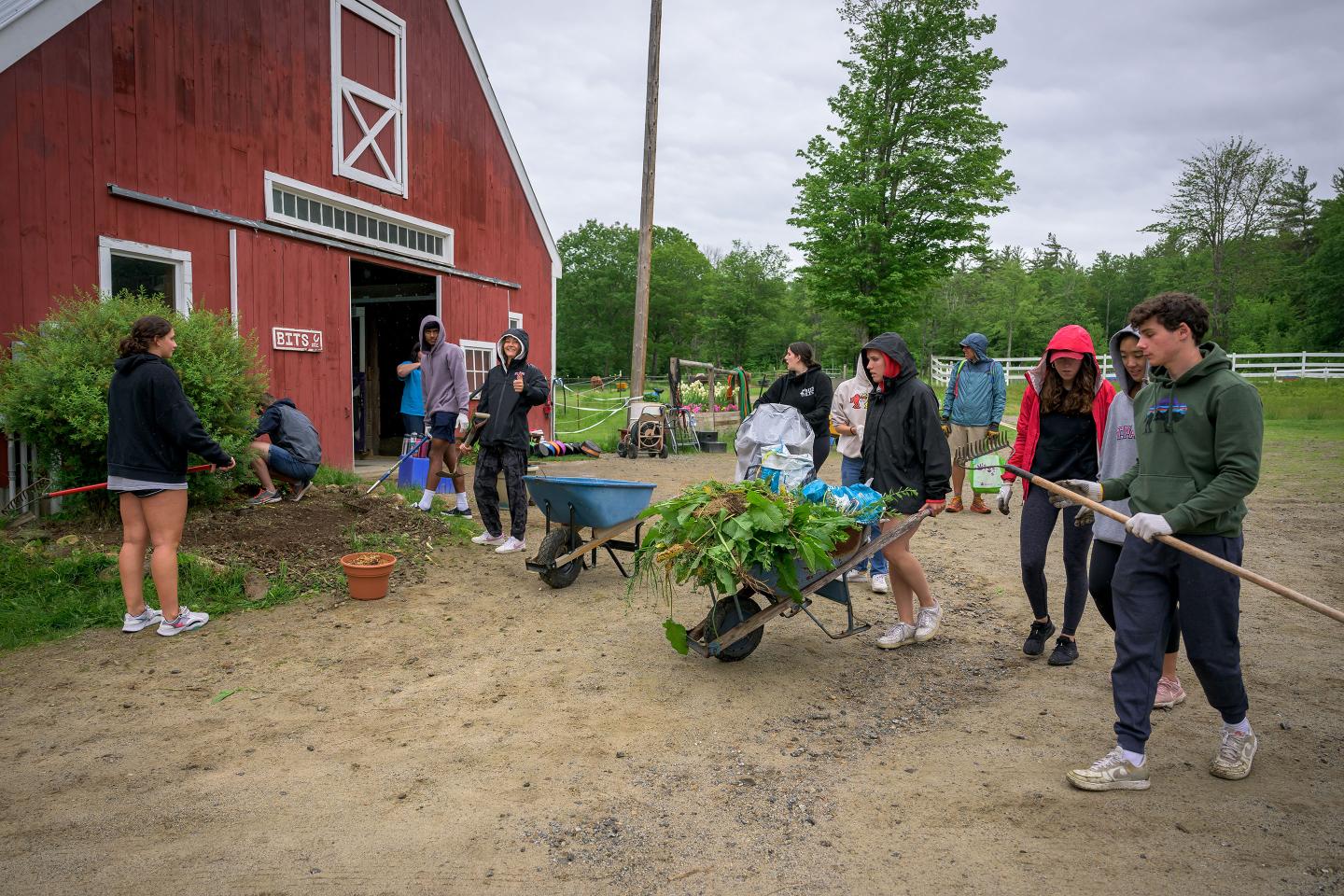
Form Outreach Days
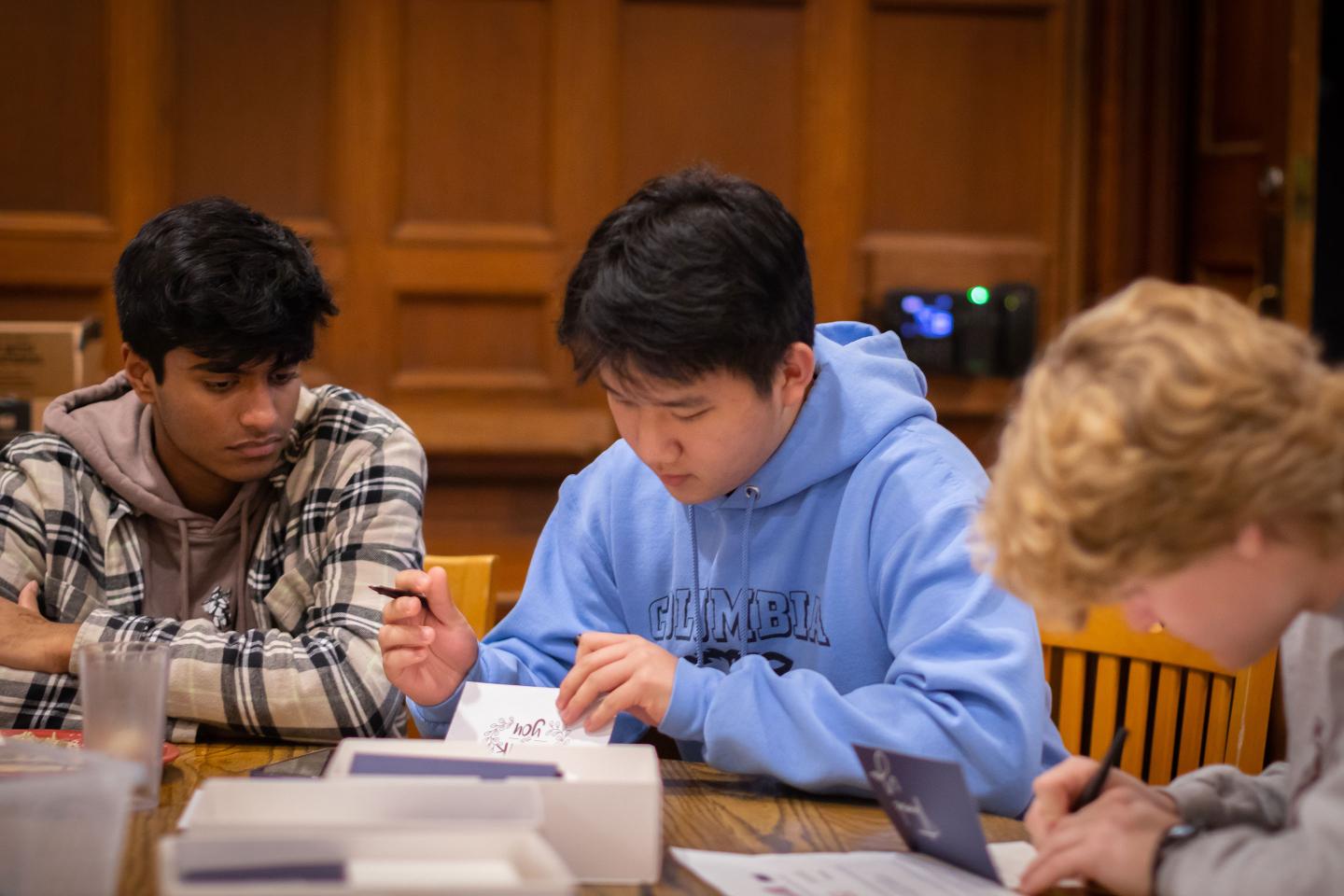
Veteran’s Day letter-writing event
And with SPS students and alumni all across the globe, “service everywhere looks different,” says Xiaoyu “Sarah” Hu ’23, who has served as MISH president for the 2022-23 academic year. “I’m from Shanghai, so a lot of the things we do here are new to me. I’ve learned a lot.”
Hu grew up around service and was strongly influenced by her mother, who is active in community service and regularly took Hu to fundraising events. “One of her very good friends goes to schools in rural China and works with teachers on how to teach children to read — not just literacy, but how to actually interpret stories, how to value the tales and story books they’re reading and the messages they can get out of them,” Hu explains.
Inspired by this example and by the values her mother and other mentors were passing along, at the age of 12, Hu helped build a library for children in one of these towns. Those same values quickly found a home at St. Paul’s. As a Third Former, Hu participated in a Spring Break service project focused on immigrants and refugees in Concord, which included volunteering at a center where basic English language skills are taught to help participants navigate daily tasks and interactions, such as going grocery shopping. In Fourth Form, she was part of a program focused on food insecurity and its prevalence in America.
“You get to know a community and its needs, and you cater to those needs by doing what you can,” Hu says. Now, as MISH president, she taps into her experience to organize service projects with other officers and students — but she doesn’t let the word “president” affect her. “I see it as more of just a title, because I feel like everyone on the board does so much to contribute and we’re all equally important.”
Focus on Fundraising
The origins of MISH unfold in the thousands of pages that make up the archives of the Horae Scholasticae in the basement of Ohrstrom Library, where every issue is carefully stored and protected on high shelves. At one time the School’s literary magazine, newspaper and alumni newsletter, the earliest issues of the Horae Scholasticae are yellowed, crisp and flaky to the touch. If one holds these pages close to read the delicate print, visions of the School’s earliest days begin to emerge.
A four-person “Committee of Publication” published the first issue of the monthly Horae Scholasticae in June 1860, five months after the Missionary Society was founded in January. The front page of that first issue reads, “The object of our paper, the first number of which is now before you, is to raise funds to be devoted to domestic missions.” This announcement is followed by students’ poems and short stories, a summary of a cricket match between “the two Clubs of the school — the Old Hundred and Isthmian,” and a handful of advertisements: three selling or calling for eggs, one offering a wood-turning service, and one selling lemonade and pie. Subscriptions to the Horae Scholasticae were sold for two dollars a year; proceeds were donated to organizations such as “the Orphans’ Home” and helped to fund the club’s various service missions.
Much of the Missionary Society’s history also is recorded in the student newspaper, The Pelican, which made its debut on Sept. 19, 1945. The second issue of The Pelican, published the following month on October 3, describes how the Missionary Society helped run a summer camp in Danbury, New Hampshire, called School Camp, for boys from the Boston and New York areas. Often, Missionary Society members worked as School Camp counselors. “One who has been a councillor (sic) at the camp cannot but feel that he has made a real contribution to the welfare of society,” reads an article in that October 3 issue.
On the whole, historic coverage of the Missionary Society is a chronicle of the organization and execution of various fundraising events at St. Paul’s — including a student-favorite fair and dance launched in the 1890s that over the decades became, for many, synonymous with the organization itself. An Oct. 2, 1998, issue of The Pelican details more than 10 service projects that were available for students to participate in during the 1998-99 academic year. These included working at the MISH Shop, a secondhand clothing store in the Red Barn that sold items donated via MISH bins in each student house. The MISH Shop continued until 2020, when it closed amid the COVID-19 pandemic; students and others are currently looking into what the next version of the MISH Shop might be.
An Education in Empathy
Each year, MISH officers select a theme for the academic year’s service projects. For 2022-23, they chose to concentrate on homelessness in Concord and supporting families and children in Ukraine.
“There is essentially an area in Concord, kind of out of the public view, where homeless people have had to settle in tents and with really rudimentary equipment,” Hu says of MISH’s local priority. “They are not humane living conditions, and it’s a growing community. Learning this struck a chord with each of the MISH officers and we decided we wanted homelessness in Concord to be our focus this year.”
To that end, the Concord Coalition for Homelessness was the beneficiary of a MISH fundraiser this past winter. A MISH Chapel talk in the fall aimed to increase student awareness of the issue, and during Spring Term, MISH officers organized a panel where local nonprofit directors discussed the state of homelessness in Concord and Manchester and the “Housing First” strategy. The school-wide LinC program, introduced in recent years to help every student become knowledgeable, responsible, caring and contributing members of society, also provided related programming; in April, the Spring Term LinC Day focused on some of the social and economic factors that often play a role in homelessness.
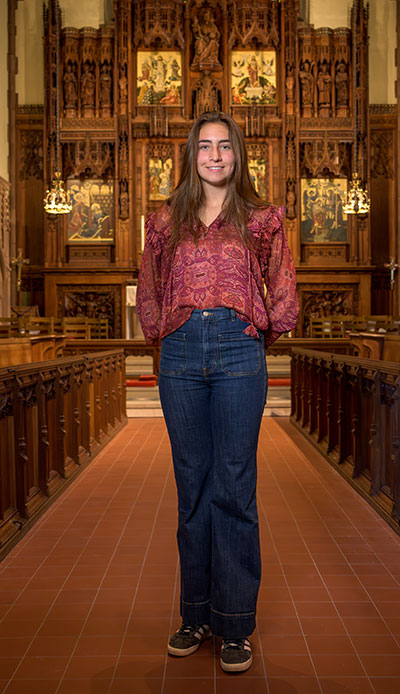 Lidia Zur Muhlen ’24 had already fulfilled her service requirements for graduation when she approached Hu last spring with the desire to lead a service project for Ukraine. The duo collaborated with Humanities Teacher Josh Duclos and Associate Dean of Admission Michelle Hung to fundraise at mealtimes and Saturday night events. They purchased a generator with the funds and worked with the nonprofit Common Man for Ukraine to track the purchase from the U.S. all the way to a specific Ukrainian orphanage.
Lidia Zur Muhlen ’24 had already fulfilled her service requirements for graduation when she approached Hu last spring with the desire to lead a service project for Ukraine. The duo collaborated with Humanities Teacher Josh Duclos and Associate Dean of Admission Michelle Hung to fundraise at mealtimes and Saturday night events. They purchased a generator with the funds and worked with the nonprofit Common Man for Ukraine to track the purchase from the U.S. all the way to a specific Ukrainian orphanage.
In addition to her work for Ukraine, Zur Muhlen also is the recipient of this year’s winter Sokoloff grant. A program established thanks to the generosity of Kiril Sokoloff ’65 that supports and helps fund a select student’s independent service project, winter Sokoloff grants are voted on by MISH officers who consider each candidate anonymously (there also are larger summer Sokoloff prizes, which are awarded by a committee of School administrators with input from the MISH officers). In the last few years, Sokoloff grants have funded student projects that provided computers and software for a basic programming course taught to underprivileged teens; provided supplies and CPR classes for women working in community kitchens in Peru; and established a new library at a men’s second chance sober living center in Idaho.
For her Sokoloff grant independent service project, Zur Muhlen reached out to local nonprofits to find a place where SPS students could volunteer in a meaningful way; Family Promise of Greater Concord was a natural match. In the organization’s rotating shelter program, local church congregations offer their spaces for families experiencing homelessness to take temporary shelter, while community volunteers help provide food, toiletries, resources and a listening ear for those working to get back on their feet. The Sokoloff grant enabled Zur Muhlen to buy games and toys that she could bring to the children of these families, and that MISH volunteers could continue to use for future service projects.
“I really wanted to make it a sustainable project that could be used by future SPS students,” Zur Muhlen says. “Most of the people we were working with were at one point living in houses and [were] stable. They don’t necessarily want a ton of help; they just want the resources in order to keep moving.”
She was also part of a group of SPS students who spent time with the families, listening to their stories and talking over shared meals. Zur Muhlen wants students to realize that they, too, are capable of leading service projects of their own. “Even without the Sokoloff grant, it’s possible to create your own project if you’re willing to put in the work,” she says.
Real-world Relevance
Independent of MISH’s annual theme, for the past several years the SPS community engagement program has focused on two areas: working with the youth of Concord and addressing areas of critical need in communities near or far. When working with students to approve independent service projects Bernier helps them focus on how to contribute to their home communities in these ways. “We want these to be meaningful opportunities for both parties,” she says. “The graduation requirement has shifted to be a little more focused, so the students can dig into one area that means something to them.”
Many SPS students and MISH officers serve in other ways, even if they aren’t taking the lead on a project. As a junior MISH officer, Pierce Trevisani ’25 has contributed to multiple service projects over the year, including organizing a raffle during Fall Term as part of a fundraiser for the Concord Coalition to End Homelessness and selling items like custom stickers as part of a fundraiser for Ukraine.
Trevisani will continue as a MISH officer next year and aspires to join one of the Spring Break community engagement trips before he graduates. He is particularly interested in the projects that serve the local Concord community, a place he says has given him a lot throughout his first two years at SPS.
“Being a MISH officer means a lot of things to me, and it’s hard to zero in on just one,” Trevisani says. “But being able to raise money for off-campus services is a very rewarding experience that I am honored to be a part of.”
And since the other officers are currently Sixth Formers and will be off to new adventures come the fall, Trevisani will be the sole returning officer left to carry the torch. “I hope to be able to pave the path for my new fellow MISH officers,” he says — just as generations of MISH officers have done before him, and will continue to do for years to come, one of the many ways in which SPS students embody what it means to be in service to the greater good.
A MISH Tradition
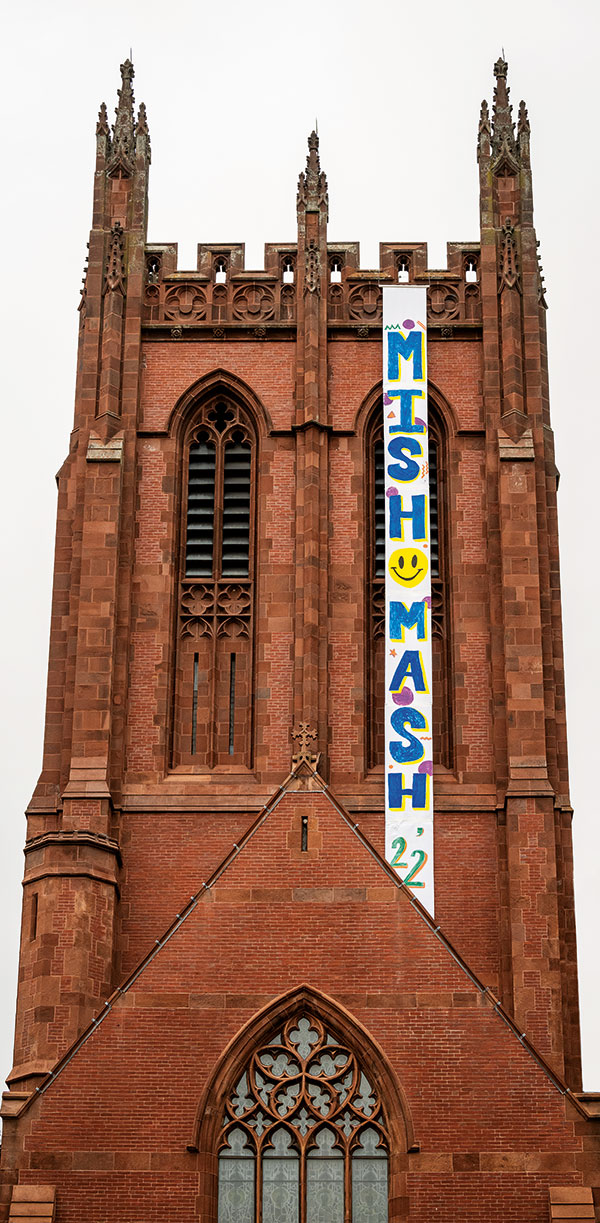 It’s one of the most anticipated events of the School year, a surprise holiday announced not by the Chapel reading of Zechariah 8 and its invocation of boys and girls playing on the streets of Jerusalem, but by methods as diverse as notes inside fortune cookies and a banner unfurled from the Chapel tower. Ask the average SPS student, however, and chances are they can’t tell you the origins of the MISH holiday and dance — or how, exactly, it’s connected to the School’s oldest club.
It’s one of the most anticipated events of the School year, a surprise holiday announced not by the Chapel reading of Zechariah 8 and its invocation of boys and girls playing on the streets of Jerusalem, but by methods as diverse as notes inside fortune cookies and a banner unfurled from the Chapel tower. Ask the average SPS student, however, and chances are they can’t tell you the origins of the MISH holiday and dance — or how, exactly, it’s connected to the School’s oldest club.
In the late 1800s, long before girls attended SPS as students, the boys of SPS invited select young ladies to the grounds for an annual celebration. The girls likely wore the puff-sleeved gowns and chignons signature of the late Victorian era, while the boys dressed in frock coats and top hats. The event, Washington’s Tea, was held around the time of George Washington’s birthdate, February 22, and students were invariably eager for the reprieve from their studies. In 1897, however, these Washington Tea attendees — students and their dates from nearby all-girls schools — took the festivities in a different direction.
“The auditorium was beautifully and tastefully draped with flags, while the stage, on which the orchestra sat, was covered with rugs, screens and tall lamps,” reads a short article in the March 1897 Horae Scholasticae. “The tea lasted from four till six … Refreshments were sold, and after a while the tables were pushed back and dancing began.”
It’s unclear if the dancing was impromptu or a planned activity; regardless, it was the start of a tradition. What began as Washington’s Tea became an annual “tea dance” held over the Mid-Winter Holiday or Mid-Winter Weekend, and by 1900, Washington’s Birthday celebrations on the grounds had grown to include a Missionary Society fundraising fair along with the requisite dance and holiday. “The coming of this holiday is always hailed with more than the mere delight of a release from the class-room, for it makes us realize that we have accomplished more than half our year’s work,” reads the Feb. 22, 1906, Horae.
Uncoupled from the Mid-Winter Weekend in the early 1980s, the MISH holiday and dance now takes place in late April or early May and continues to function as the marquee fundraising event for MISH as students make donations to the year’s cause that serve as their “entry fee” to the dance. Fitted into a full spring schedule of classes, clubs, athletics and year-end activities, the exact date of the festivities remains a surprise even to the MISH officers.

